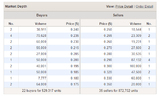Mofra
Moderator
- Dec 6, 2005
- 67,253
- 198,828
- AFL Club
- Western Bulldogs
- Other Teams
- Footscray, Coney Island Warriors
- Moderator
- #2,901
Edit: I may pick up some gold (long). Counter-intuitive at this stage of the interest rate cycle but central bank buying went nuts in 2021 after a quieter 2020.
My timeframes are a fair bit longer than most on here though
most on here though
My timeframes are a fair bit longer than











